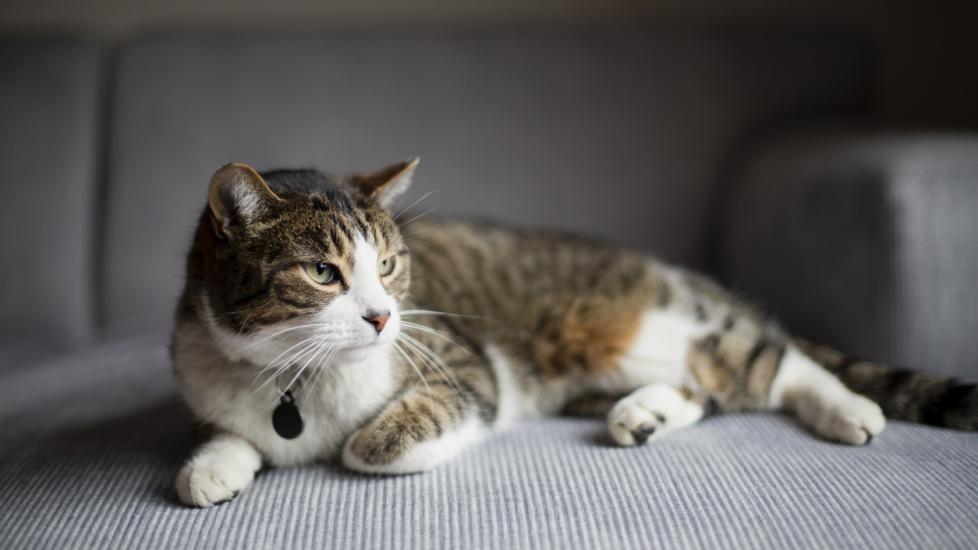Cat Abscesses
What Are Cat Abscesses?
Cat abscesses are areas of infection that typically occur on the skin and underlying tissues. Abscesses are usually caused by bacteria entering the skin through a bite or puncture wound.
Health Tools
Not sure whether to see a vet?
Symptoms of a Cat Abscess
The first and most obvious symptom of many abscesses is the actual wound, whether it’s a bite mark, a puncture wound, or a claw mark. You may also see matted hair around the wound. The matting is caused by pus oozing from the abscess.
Symptoms of a cat abscess include:
-
Swelling
-
Pain
-
Fever
-
A foul-smelling discharge or pus (with or without blood)
-
Limping if the abscess is in one of the cat’s legs.
Causes of Cat Abscesses
Cats can be very territorial creatures, but unneutered males are especially known for not wanting other animals in their space. When a cat feels that an intruder has entered his space, he may become aggressive and start a fight. In addition to territorial fights, indoor cats may fight if there are social conflicts within the home.
Any time a cat suffers a bite or claw wound during a fight, bacteria from the biting cat’s mouth or claw is introduced into the wounded area. This can result in a localized infection in the skin.
An abscess is a pocket, or collection, of pus that forms under the skin as a result of the infection.
How Veterinarians Diagnose Cat Abscesses
If your vet suspects an abscess on your cat, they will perform an examination. This may include reviewing the cat’s health history and discussing any recent incidents of biting or fighting. The vet will also ask if you’ve noticed any pain, swelling, or foul-smelling discharge.
Blood Chemistry Test
Depending on your cat’s health history and the physical exam, your vet may also perform a blood chemistry test to have a clear overall picture of your cat’s health.
Cytology
During this test, your vet will collect a small sample of the discharge with a very fine needle and a sterile swab. The discharge will be examined under a microscope and perhaps cultured to identify the type of bacteria.
Treatment for Cat Abscesses
Treatment of a cat abscess is straightforward and usually includes:
-
If an abscess is already draining, the area will be thoroughly cleaned.
-
Abscesses that have not started draining may require the cat be sedated for a simple surgery.
-
Antibiotics.
-
At-home cleaning and care will be required as the area heals. Your veterinarian will provide instructions tailored to your cat’s needs and severity of infection.
Recovery and Management of Cat Abscesses
Most cat abscesses heal within two weeks with appropriate treatment. If an abscess is not healing as expected, your cat may have a resistant bacterial infection or may have feline leukemia (FeLV) or feline immunodeficiency virus (FIV), which can affect the immune system and healing.
To prevent future abscesses, male cats should be neutered to decrease territorial behavior and fighting. If your cat spends a lot of time outdoors, ask your veterinarian if he or she should receive a FeLV vaccine.
Cat Abscesses FAQs
Should I take my cat to the veterinarian for an abscess?
Yes, your veterinarian can clean the area, prescribe antibiotics, and instruct you on proper home care.
How can I treat an abscess on my cat at home?
Follow the treatment plan prescribed by the vet. This may include giving prescribed medications and keeping the area clean as tolerated by your cat.
Can an abscess kill a cat?
It’s very uncommon for an abscess to be fatal. However, a cat’s prognosis depends on the location of the abscess, the extent of infection, and type of bacteria involved.
Will a cat abscess heal on its own?
No. Although an abscess may not require medicine, it does require proper treatment to heal completely.
What happens if a cat abscess goes untreated?
The infection can extend beyond the initial wound and potentially spread throughout the body, making the cat quite ill. An untreated abscess may also result in an antibiotic-resistant infection.
References
1. “Bite Wounds: Felines” by Dr Gary D. Norsworthy in The Feline Patient, Fourth Edition, Wiley-Blackwell, 2011
Featured Image: iStock.com/Linda Raymond
Help us make PetMD better
Was this article helpful?
